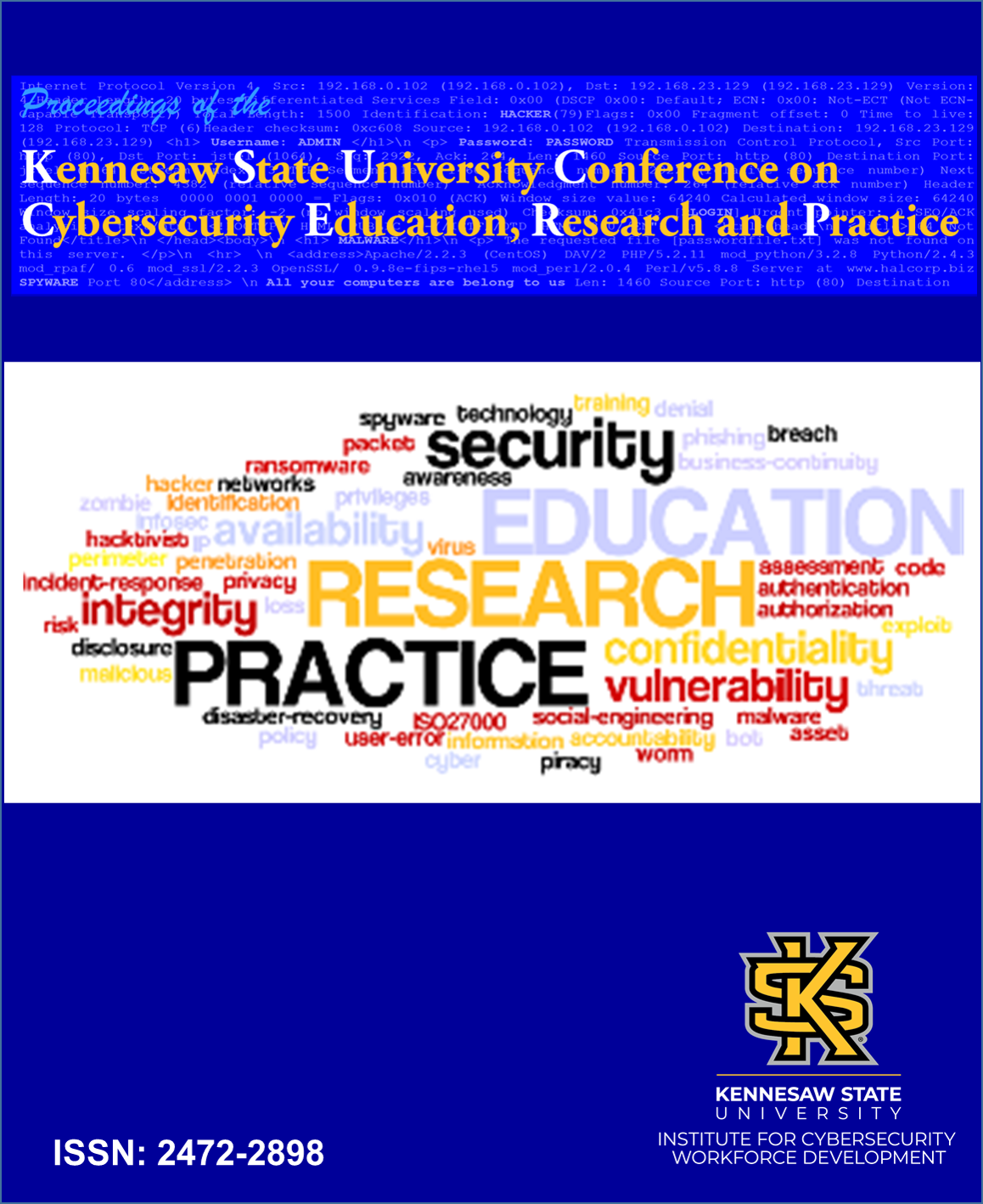Start Date
30-10-2021 11:00 AM
End Date
30-10-2021 11:30 AM
Location
Online Zoom Session
Abstract
Robots are widely used in our day-to-day life in various domains. For example, eldercare robots, such as CareO-Bots [1]are used to perform household tasks and provide mobility assistance [2]. Amazon uses manufacturing robots to accomplish manufacturing labor activities, such as welding and assembling equipment [2]. According to the International Data Corporation, spending on robotics is expected to reach USD 241.4 billion by the end of 2023 [4].
However, malicious users can exploit security vulnerabilities in hardware and software components of robotics systems to conduct security attacks and cause malfunction, i.e., deviate robots from their expected behaviors. Security attacks on robots can have serious consequences such as (i) bottlenecks and shutdowns in the assembly line, (ii) disruption in the food supply chain, (iii) incorrect treatment for patients, and (iv) unwanted military attacks injuring or killing civilians and military personnel [2].
Researchers [3] have observed a lack of awareness amongst practitioners related to security issues that can exist in robotics systems. Using qualitative analysis, the project aims to determine the software vulnerabilities that commonly appear in robotics systems.
In this work in progress, we plan to discuss our initial findings using Robotics Vulnerability Database (RVD) repositories [5] the following questions – (i) what are the most frequent security vulnerabilities in robotics systems? (ii) what types of components are affected by the vulnerabilities? (iii) what categories of vulnerabilities exist and severity for robotics systems?
Included in
Information Security Commons, Management Information Systems Commons, Technology and Innovation Commons
Analyzing Robotics Software Vulnerabilities
Online Zoom Session
Robots are widely used in our day-to-day life in various domains. For example, eldercare robots, such as CareO-Bots [1]are used to perform household tasks and provide mobility assistance [2]. Amazon uses manufacturing robots to accomplish manufacturing labor activities, such as welding and assembling equipment [2]. According to the International Data Corporation, spending on robotics is expected to reach USD 241.4 billion by the end of 2023 [4].
However, malicious users can exploit security vulnerabilities in hardware and software components of robotics systems to conduct security attacks and cause malfunction, i.e., deviate robots from their expected behaviors. Security attacks on robots can have serious consequences such as (i) bottlenecks and shutdowns in the assembly line, (ii) disruption in the food supply chain, (iii) incorrect treatment for patients, and (iv) unwanted military attacks injuring or killing civilians and military personnel [2].
Researchers [3] have observed a lack of awareness amongst practitioners related to security issues that can exist in robotics systems. Using qualitative analysis, the project aims to determine the software vulnerabilities that commonly appear in robotics systems.
In this work in progress, we plan to discuss our initial findings using Robotics Vulnerability Database (RVD) repositories [5] the following questions – (i) what are the most frequent security vulnerabilities in robotics systems? (ii) what types of components are affected by the vulnerabilities? (iii) what categories of vulnerabilities exist and severity for robotics systems?



Comments
This is work-in-progress is to discuss updated results from ICWD 2021 summer grant work.